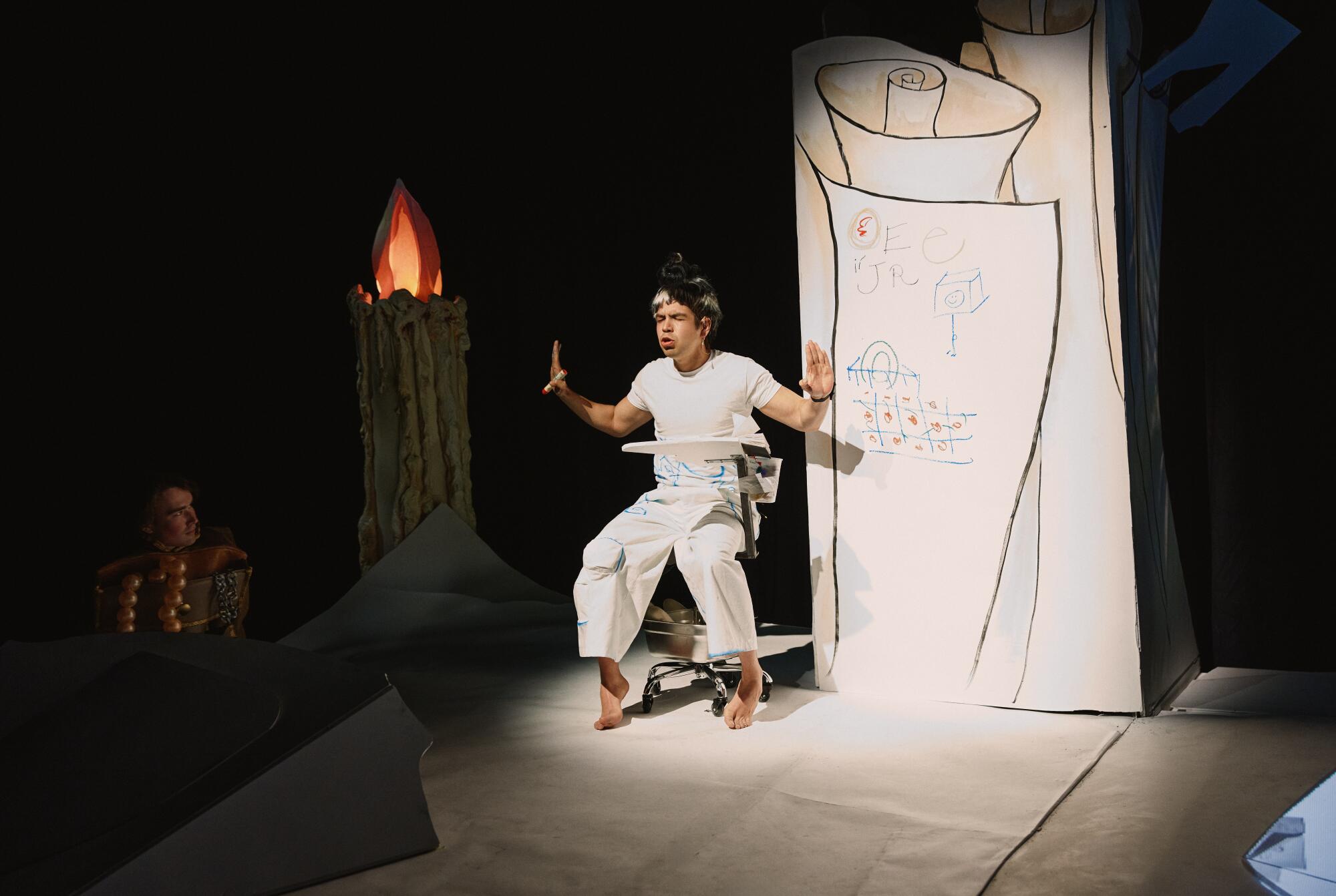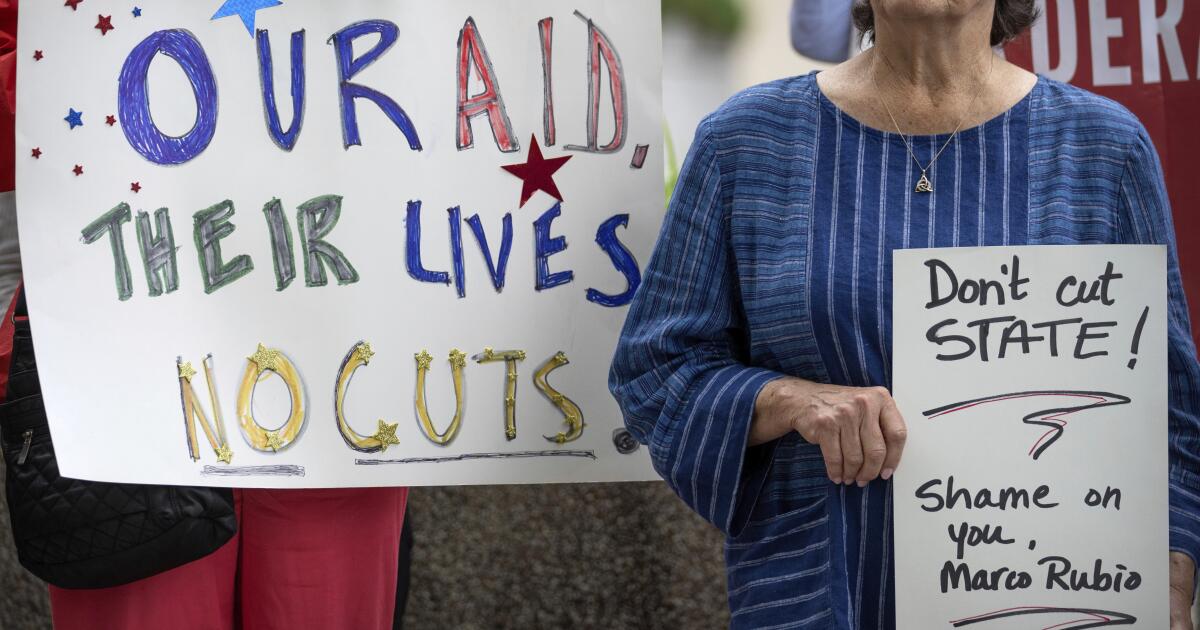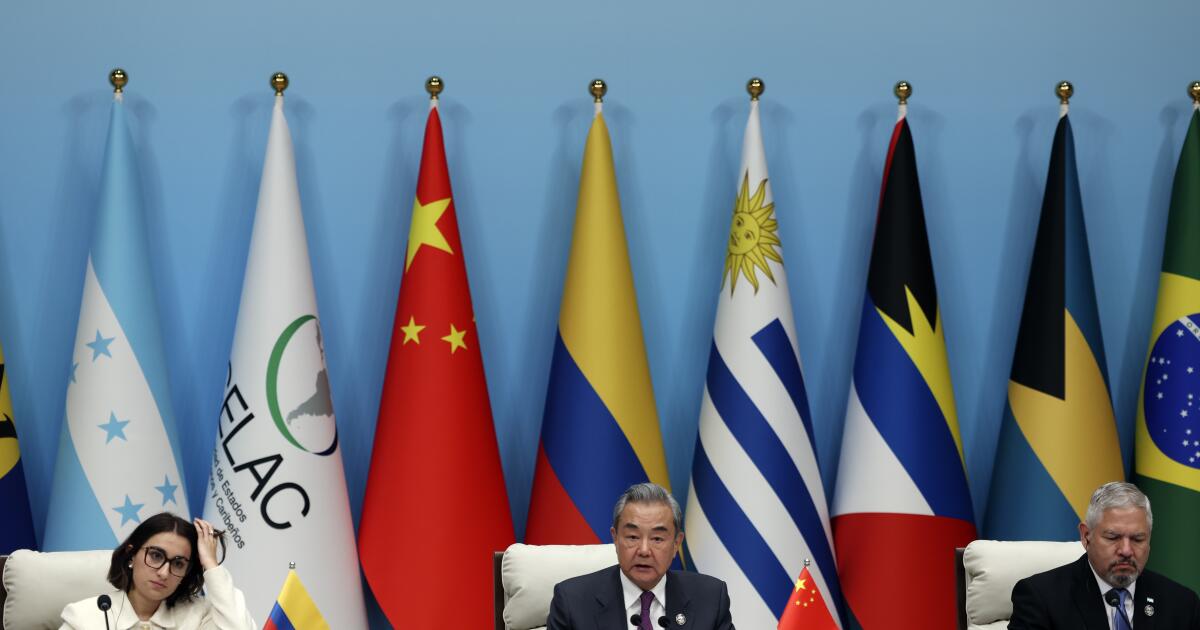Julio Torres makes off-Broadway debut with new play ‘Color Theories’
Julio Torres is always in search of the next challenge. The writer, comedian, actor and producer is adding the title of playwright to his ever-growing, multi-hyphenate list of occupations. Since his days as an Emmy-nominated writer for “Saturday Night Live,” Torres has written and starred in the Peabody Award-winning HBO Max original series “Los Espookys,” wrote and starred in the HBO Max original series “Fantasmas” and directed, wrote and starred in his first feature film, “Problemista,” co-starring Tilda Swinton.
For his latest venture, Torres made his way to the stage — admittedly not knowing exactly what goes on in the theater, but willing to take a shot with his first comedic play, “Color Theories.” In it, the audience gets a closer look at the eccentricities that frame his imaginative inner world.
As the son of a civil engineer and architect/fashion designer, Torres’ knack for world building comes as no surprise. In a recent feature for Architectural Digest, Torres opened the doors to his wonderland Brooklyn studio apartment, which contained escapist daydream corners and custom futuristic furniture made of glass, chromatic metals and mirrors, all cut and shaped into squiggles and sharp edges. With elements of retro-elegance and the ambiance of a playhouse, Torres’ vision is nostalgically absurdist and highly refined.
The same can be said about most of his work, including his vision for “Color Theories.” In order to bring his ever unpredictable vision to life, Torres teamed up with longtime scenic design collaborator Tommaso Ortino to create a fantastical surrealist stage for his live theatrical debut, which took place Sept. 3 at the Performance Space New York, located in downtown Manhattan.
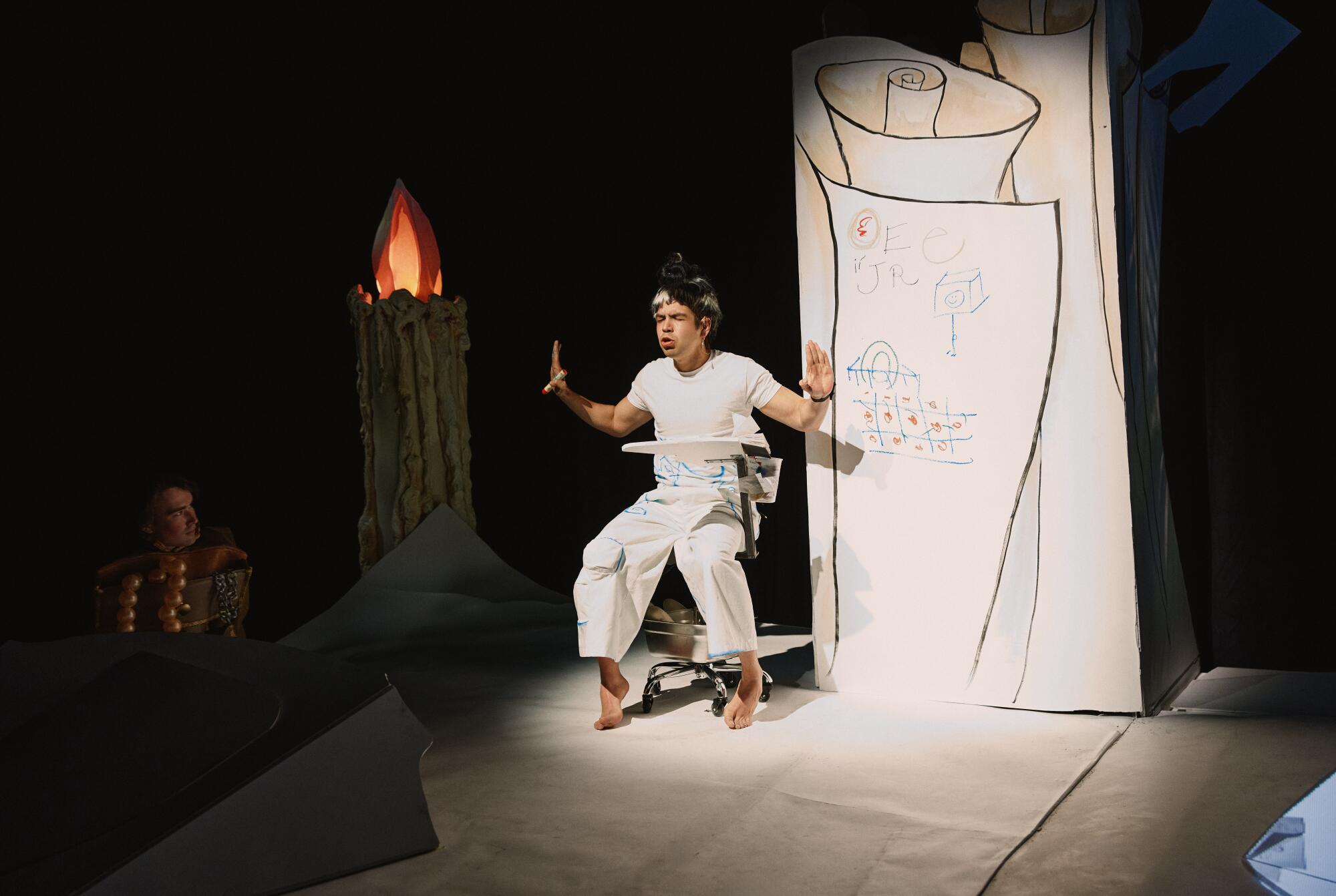
Julio Torres performs in “Color Theories” at the Performance Space New York.
(Emilio Madrid)
Before Torres begins his performance, the audience is greeted by a giant book doused in bold, mostly primary colors, a grandfather clock with the numbers melted off its face à la Dalí and tall, blank scrolls. On top of the book lies a giant lipstick-stained wine glass, and an actor lying face down in a bubble-shaped, burgundy satin cloak — or, Drew Rollins playing the role of spilled wine. Rollins is accompanied by Nick Myers, who sits on the side of the stage dressed as a music box in silver foil and oversized pearls. They both play the roles of Torres’ stagehands and narrative helpers. Costumes were designed by Muriel Parra, best known for her work in “A Fantastic Woman” (2017), “Neruda” (2016) and “The Settlers” (2023).
Once the lights come down and the play begins, the whimsical characters crack open the giant book, revealing a stark contrast of blank pages. They proceed to open a flap where the comedian emerges, from the cushioned interior of his own creation. He begins by describing the abstract personalities of different letters of the alphabet, referring to them as staff with “wants, needs, hopes and dreams.” From there, he seamlessly transitions into the definition of the first color on the list: navy blue, which represents (American) bureaucracy, policing and control. Throughout the play, this “law and order” blue encroaches on the existence of every color selected by Torres.
Upon noticing that Torres is spending too much time discussing navy blue, his robotic buddy Bebo — also a recurring character in “Fantasmas” — pops out of the giant clock and serves as a colonel of time and color story order. (He also happens to be blue.)
What Torres dubs as “relaxed” green, “commercial-portrayals-of-joy” yellow, “lusty and ragey” red, “teenage” orange, “soft” beige and “mysterious” purple are all accompanied by playful examples of behaviors, objects and societal conditioning that represent each color. The operatic sound effects paired with each color were created by Lia Ouyang Rusli, who was tasked with the important role of not only composing the sounds for each color, but their respective emotions. Torres explained in a separate interview: “Green should also sound like we combined the sounds of yellow and blue, and so that’s fun.”
One of the most poignant moments of the play is during his green monologue, when Torres reminisces about the video store he grew up visiting in San Salvador. He unashamedly admits he never returned a movie on time, so the owner would bargain the late fee with him based on if the movie was requested during the days it was off the shelf or not.
“This was all working perfectly fine until Blockbuster came in and suddenly we were in a navy blue system,” he explains — with a nod to the U.S. influence on El Salvador, namely in the way American capitalism infringes on countries within reach of its empirical tentacles.
Immigration status is a recurring theme in much of Torres’ work. In his directorial debut, “Problemista,” Torres plays the protagonist Alejandro, who scrambles to find a work visa in 30 days after being fired from his job — and makes desperate attempts to earn quick cash in an effort to pay his legal fees. In “Color Theories,” Torres describes several run-ins with airport immigration authorities and the complications of traveling with a Salvadoran passport.
He recounts being turned away from entering Costa Rica because his passport was too wrinkled — and of being taken to an interrogation room for not knowing he needed a travel visa to enter the U.K. While detained, he noticed authorities had branded the interrogation area as a pseudo-mental wellness safe space — messaging that contradicted the reality of his experience.
Torres uses blue and red to exemplify his anti-capitalist stance by endearingly explaining how those with extreme wealth maneuver tax evasion, how governments allow and excuse war crimes, and how pervasive individualism prevents progress. “Color Theories” reaches its apex when Torres begins discussing the space between the shades black and white — neither representing good nor evil, but rather the known and the unknown.
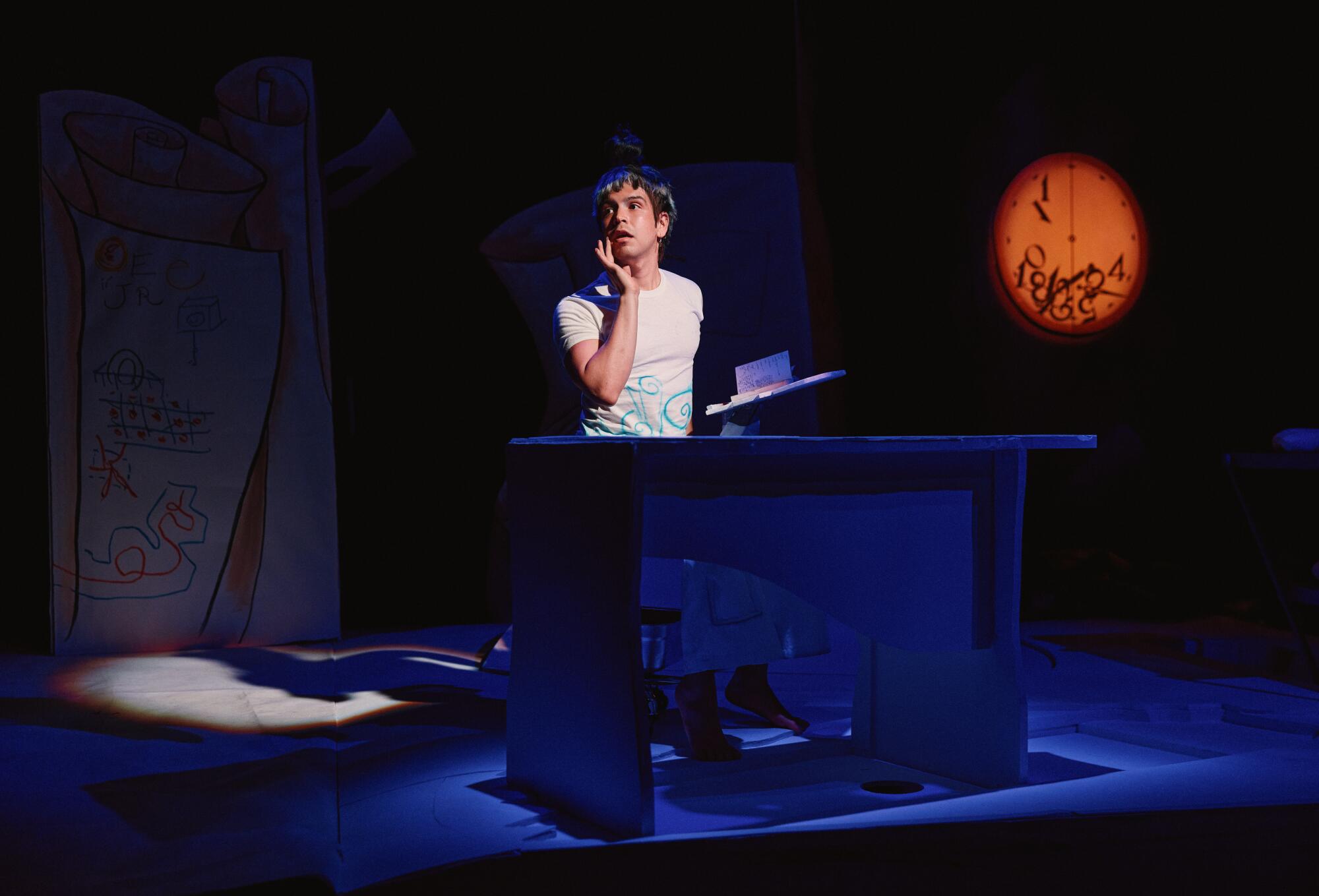
Julio Torres’ new play “Color Theories” at Performance Space New York.
(Emilio Madrid)
It’s a beautiful way to take what have become very divisive points of view and create an atmosphere of shared humanity among the audience. From here, the colors that become the focal point are bright, airy mixes of pastels, which highlight the beauty in all of our differences and ranges of knowledge.
In just over an hour, Torres delivers a concise portrait of how he navigates and experiences the world in terms an elementary schoolchild can understand — which he jokes about by saying the play will be taken to schools across the U.S. His character development transitions from a justified frustration to the conclusion that humans behaving as though they know it all is the ultimate act of hubris.
“Color Theories” does not communicate as a pessimistic rant about the world but rather examines how government and institutions of power shape our society — and how that power complicates and often oppresses the everyday reality of the average person — by using humorous, universally relatable vantage points and lighthearted pop culture moments.
